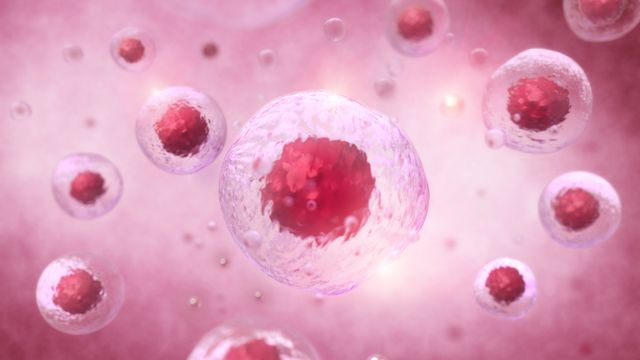Thank you. Listen to this article using the player above. ✖
Want to listen to this article for FREE?
Complete the form below to unlock access to ALL audio articles.
In a scientific first, researchers from Vanderbilt University and the University of California, San Diego, have generated a high-resolution metabolic “map” of how cells orchestrate glucose processing, revealing a hidden world where organelles and molecular complexes collaborate when responding to a rush of nutrients. This new study, published in Nature Communications, has redefined how glucose metabolism is visualized at the single-cell level. The pioneering work provides both a new method and insights into an organizational and molecular framework that can be used to study how metabolic processes are disrupted in diseases like diabetes, obesity, and cancer, as well as in aging and neurodegeneration.
“This is a new field—we are at the forefront by integrating multiple microscopy modes into sophisticated pipelines to measure the fate of glucose atoms, from whole animals to organelles, and to show the underlying subcellular architecture associated with these processes in cells,” Rafael Arrojo e Drigo said. Arrojo e Drigo is an assistant professor of molecular physiology and biophysics and the corresponding author of the study. “We expect that this advance will propel a new program that exploits these advanced investigational strategies to study and better understand how nutrient metabolism is organized within the highly structured domains of cells and tissues, which allows for the precise regulation of organ function in the context of whole-animal physiology.”
To date, what scientists know about how cells process nutrients like glucose has been derived from bulk metabolomics. Using metabolomics, researchers can analyze an entire set of small molecules within a biological sample, such as a tissue, but it’s done without consideration of the specific spatial or subcellular contexts in which they occur.
“These bulk strategies do not reveal the spatial characteristics of cell metabolism at the single-cell level or how these aspects relate to the location of cells and organelles within the complexity of the tissue they reside within,” Arrojo e Drigo said.
This gap in the field’s understanding drove a multidisciplinary team from Vanderbilt, the Vanderbilt University Medical Center, and UCSD to combine stable isotope tracing, multi-scale microscopy, and AI-powered image analysis to map glucose metabolites at animal, tissue, cellular, and organellar scales. The Vanderbilt team was led by co-first authors Christopher Acree and Aliyah Habashy from the Arrojo e Drigo lab and included scientists from the Vanderbilt Mouse Metabolic Phenotyping Center, the Mass Spectrometry Research Center, the Department of Cell and Developmental Biology, and the VUMC Department of Surgery. Researchers from Mark Ellisman’s group at the National Center for Microscopy and Imaging Research at UCSD rounded out the collaboration.
Together, they determined the spatial organization of glucose metabolites, from inside whole animals to within liver cells and even in individual mitochondria. Using isotopically labeled glucose infusions in live mice, the researchers mapped how glucose-derived carbons were incorporated into glycogen, lipid droplets, and other cellular components over time.
Among the major discoveries of this study, the team uncovered a previously unrecognized structural and functional interaction between lipid droplets and glycogen synthesis. In addition, the researchers mapped how contacts between mitochondria and the endoplasmic reticulum—two key organelles involved in energy production and nutrient sensing—shift dynamically in response to changes in blood glucose levels. These mitochondria-ER contacts form part of a broader organelle network that coordinates metabolic responses within the cell. By charting the timeline of these interactions, the study offers new insights into how organelles reorganize to adapt to different metabolic states, shedding light on fundamental mechanisms of glucose metabolism and cellular energy balance.
This breakthrough was made possible by Vanderbilt’s characteristic interdisciplinary environment and the multi-scale, multi-modal imaging thrust of the NCMIR, an alliance that brought together experts in stable isotope tracing, in vivo animal metabolism, mass spectrometry imaging, AI, and computational modeling, Arrojo e Drigo said. Looking ahead, the team hopes to understand how the spatial organization of nutrients inside cells contributes to metabolic health and disease.
Reference: Habashy A, Acree C, Kim KY, et al. Spatial patterns of hepatocyte glucose flux revealed by stable isotope tracing and multi-scale microscopy. Nat Commun. 2025;16(1). doi: 10.1038/s41467-025-60994-w
This article has been republished from the following materials. Note: material may have been edited for length and content. For further information, please contact the cited source. Our press release publishing policy can be accessed here.
